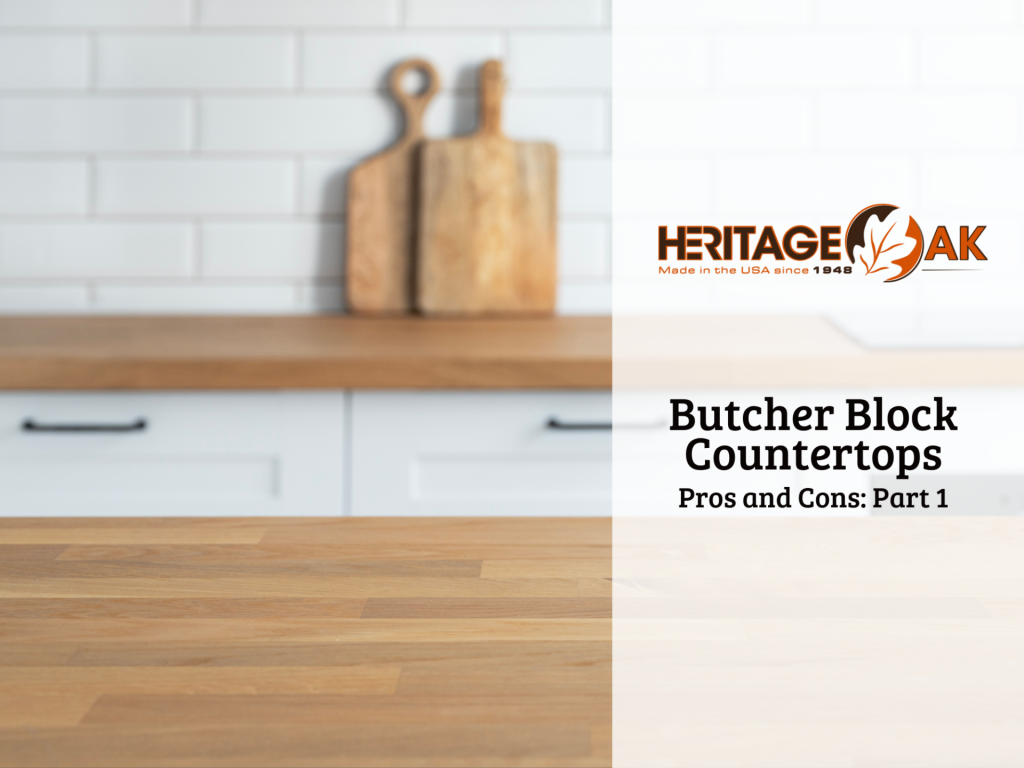
Kitchens are typically the busiest room in the house, requiring durable materials that can handle the daily wear and tear. This is why butcher block countertops are popular as kitchen work surfaces compared to granite, concrete, and laminate countertops. Compared to stone and concrete materials, butcher block countertop durability makes them resistant to impact damage without deteriorating knife edges. Furthermore, the “softer” wood surface makes for a quieter kitchen while being kinder on dishes that are accidentally dropped. So besides durability, what are the pros and cons of butcher block countertops? Let’s start with the amazing benefits of Butcher block countertops!
Benefits of Butcher Block Countertops
- Affordable, Natural Beauty: Hardwood products are amazing natural materials to work with and incorporate into your home. The affordability, durability, color scheme, and even finishing choices depend on the hardwood species you choose for the butcher block countertop. With the different characteristics of wood grain patterns and colors, butcher blocks blend well with a variety of kitchen styles.
- Versatile and Practical Work Surfaces: Butcher block countertops can be used for a variety of work surfaces! They can be used for rolling out dough, chopping vegetables, and other food prep directly on its surfaces. Just bear in mind that using the countertop as a cutting board will eventually create knife marks in the wood (which can be removed). Or they can be used for kitchen islands, end tables, and work desks for household paperwork or working on homework.
- Extensive Life Expectancy: The expected lifespan of butcher blocks is over 20 years due to the durability of hardwoods and regular oil maintenance. This is equivalent to the average lifespan of granite countertop materials while being significantly more than laminate!
- Straightforward, Easy to Care for: If you have decided to use a dedicated area of the butcher block as a cutting area, it can start looking marked up in that spot. Great news is, you can remove the knife marks yourself without needing to hire a professional! Depending on the amount of usage and the hardwood species, all you need to do is some occasional sanding and resurfacing to keep your countertops looking like new. Typically, some fine-grit sandpaper is sufficient to remove any scorch markings, knife cuts, or dings from the countertop. Then gently rub oil on the butcher block with a food-safe oil (not cooking oils) and you have a beautiful hardwood surface to work on again.
- Daily Clean-up is Simple: Even cleaning butcher block after a meal prep is relatively easy! Simply, wipe down the butcher block with a damp cloth of warm water and dish soap. Don’t use excessive amounts of water as the wood could potentially absorb the moisture and warp or crack. Be sure to thoroughly dry the countertop after washing. Quickly wiping up spills or excessive water also helps to prevent stains from developing. However if the butcher block starts to discolor, try rubbing a mixture of salt and lemon juice over the area.
Next time we’ll discuss “What are the Cons of Butcher Block Countertops?” So be sure to check in often for more information on butcher block countertops! Or if you have any questions, don’t hesitate to reach out to our professionals at Heritage Oak!